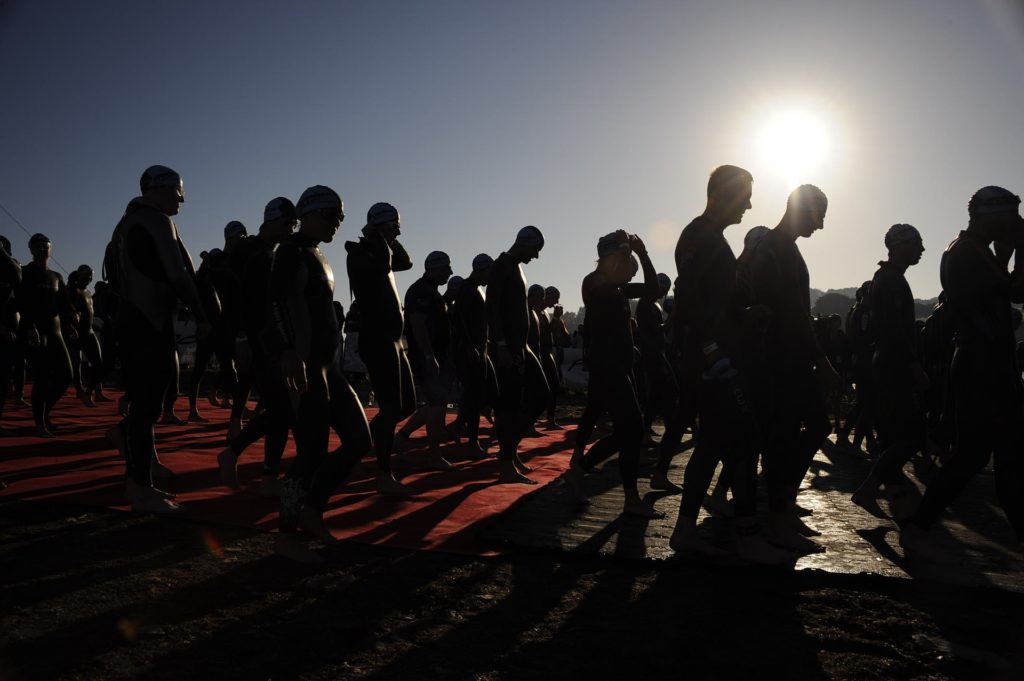Build to Your Best Race Day: Get Specific!

As winter gives way to spring, race season gets underway! This means your training will start to look and feel more and more like race day.
Each race brings with it unique challenges and demands, which require physical adaptations, mental fitness, fueling, and logistics. When your training matches these demands, it applies the principle of specificity.
So, what does this look like in practice?
Specificity
A traditional training plan is divided into periods, which build your fitness to the “A” race. This is called periodization. The periods include:
- general preparation, sometimes referred to as base
- specific preparation, also referred to as a build
- peak, most popularly known as taper
- post-season, which you’ll recognize as off-season
- pre-season, a time of transition from one season to the next
During general prep, training is structured, but it is not yet race specific. You are getting ready for the big dance, but it’s not time to leave just yet.
In this area, training may focus on adaptations that are not directly related to race day, but beneficial nonetheless. For example, long course athletes may focus on strength and speed, while short course athletes may focus on endurance and durability.
Things change once you get within 8-16 weeks of race day; now, we pivot to race specific training – the big dance is about to begin! Given the time of year, you are about to enter this period, or will be doing so soon.
Physical Adaptations
Let’s get the body ready! Physiological adaptation results from a mix of frequency, intensity, and duration. Think of these as dials you can adjust, individually and in combination, to turn up your fitness.
How hard will your effort be and how long do you need to hold it? This answer determines the intensity and duration of your race specific (RS) workouts.
For example, compare a 5k and a marathon. In training for your first half or full marathon, the weekly long run combines aerobic endurance and gradually increases duration. If you train for a 5k, the weekly track speed session becomes a staple to prepare you for the higher intensity, but shorter duration. Each part is challenging – but in different ways.
RS workouts can seem overwhelming to organize at first, especially in triathlon, so relying on a structured plan or hiring a coach will make the most of your time, and reduce injury risk.
A caveat: more is not better. You do not need to do the distance before you go the distance. The longer your race, the more this rings true. Total weekly volume (which comes from frequency + duration) is just as important as the duration of any single workout.
Your Mission:
Determine the intensity and duration demands of your race. Then, highlight at least one workout per week (one per sport for triathlon) to work at that intensity. For triathlon, make sure you include brick workouts. You can mix these up as swim to bike, and bike to run.
Terrain & Conditions
Every race has aspects of terrain that add to the “fun”. This includes elevation changes, surface type, and technical aspects (e.g., sharp turns, big descents). Conditions add to this: is the race cold or hot? Windy? Humid? Is it all of these things?
For example, if the race is hilly, include comparable hill work, in terms of elevation gain and loss. Focus on how the hills are organized. Are the climbs long and grinding or short and steep?
Your Mission:
Identify routes and terrain that match the race. Train on those routes weekly to prepare both body and mind.
Be ready for all conditions. It may rain on race day. It may be windy on race day. It may be hot or cold. Try to train in all conditions so you are ready.
Fueling
Races can (and do) go sideways due to fueling or hydration errors. Prevent this with practice! Fueling and hydration can be very individualized. The only way to know what works for you is to train with what you plan to eat and drink. In this area, focus on both type and amount
Your Mission:
Practice your fueling and hydration plan during most of your workouts – if not all of them. If something isn’t working, tweak it. For longer races especially, this practice is central to your race day success.
Recovery
Adequate recovery is vital to performance. Without it, we build too much fatigue and plateau. You may even back slide. In extreme cases, failing to recover will lead to injury and over-training syndrome.
Recovery is not a break from training. It IS the lifeblood of training.
Your number one recovery tool is sleep. Prioritize it to get 7 or more hours each night. Without sleep, your training is for naught.
Recovery is aided further by proper fueling and hydration during and after workouts, nutrient-dense daily eating, mobility work, and myofascial release, such as foam rolling or deep tissue massage.
Your Mission:
Plan recovery as a training block. Schedule it in your training plan, and then execute it just as you would any other workout.
Train for YOUR race day so you’ll be ready for what the day brings. This builds your fitness and your confidence! You will toe the line knowing that you are ready to make your big dreams a reality.

Maria Simone is a USA Triathlon Level 2 endurance and USA Cycling Level 2 certified coach and the owner and head coach of No Limits Endurance Coaching. She enjoys long weekends in the pain cave, races with hills, and hard runs through meandering single track trails with her husband and two dogs. Maria takes a holistic approach to training that considers physical ability, mental strength, and life-work-training balance. Maria works with endurance athletes of all levels, with the common thread of helping her athletes pursue and achieve their big dreams.








